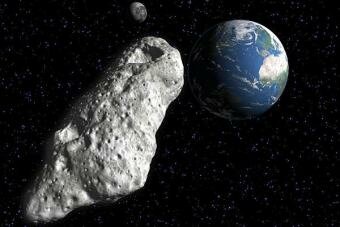A team of mathematical experts have said that 1729, which is also known as the Ramanujan-Hardy number, is linked to aspects of string theory and...

Called Asteroid 86666, it made its closest pass with earth on October 10 at 6:30 am. The asteroid is reported to be almost two-miles wide and was travelling at a speed of 40,000 miles per hour.
The Asteroid 86666 (2000 FL10), had a ‘near miss’ with earth at 15 million miles away. NASA had been tracking the giant rock on its path through the cosmos.
As per the estimation given by experts, the asteroid was roughly the size of Mount Everest and more than 15 times bigger than any other asteroid NASA is watching.
The asteroid for the first time was spotted 5,925 days, or 16 years ago. Despite being at such a long distance the asteroid was listed as a Near-Earth asteroid.
As per experts, an object is considered a potentially hazardous object (PHO) if it comes within 4,600,000 miles of Earth. Also, if the size of an object is large enough to cause significant damage it is listed as a PHO.
NASA with the help of its highly automated collision monitoring system Sentry keeps on continually scanning the most current asteroid catalog for possibilities of future impact with Earth over the next 100 years.
The next recently observed major object 2015 RN35 is currently projected to come relatively close to earth anytime from 2038 to 2114, said NASA experts.
As per experts, none of the thousands of objects on NASA's risk monitoring system are considered as likely to impact earth. The maximum detected hazard rating using the Torino Impact Hazard Scale is 10. The ten point scale rating is defined only for potential impacts less than 100 years in the future.









